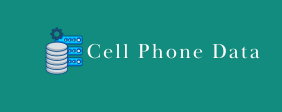In the world of digital art, understanding the difference between raster and vector graphics is crucial for artists and designers alike. Raster graphics, composed of individual pixels, are ideal for detailed images such as photographs. However, when it raster to vector conversion service to scalability, raster images fall short; enlarging them often results in pixelation and loss of quality. On the other hand, vector graphics are created using mathematical equations, allowing them to be resized indefinitely without any loss of clarity. This inherent scalability makes vector graphics particularly appealing for logos, illustrations, and designs that require versatility across different mediums.
The Importance of Conversion
Accurate raster to vector conversion is essential for artists looking to enhance their work’s quality and usability. By converting raster images into vector formats, artists can achieve cleaner lines, sharper details, and consistent color profiles. This conversion is especially beneficial when preparing artwork for print, as vector graphics to fit various sizes without compromising quality. Furthermore, vector formats are often smaller in file size compared to their raster counterparts, making them easier to share and store. Understanding the importance of this conversion process can greatly enhance the quality and impact of your artwork.
Techniques for Effective Conversion
There are several techniques available for converting raster images to vector graphics, each with its own advantages and challenges. One common creating an engaging telemarketing script is manual tracing, where an artist uses vector graphic software to trace over the raster image. This technique allows for maximum control and customization, but it can be time-consuming. On the other hand, automatic conversion tools offer quick solutions by using algorithms to detect edges and shapes within the raster image. While these tools can save time, they may not always capture intricate details accurately. Finding the right balance between manual and automatic techniques can significantly influence the outcome of the conversion process.
Tools and Software for Conversion
A variety of software tools are available to assist artists in raster to vector conversion. Popular programs like Adobe Illustrator and CorelDRAW offer ukraine business directory features for both manual and automatic tracing. These tools provide artists with the ability to refine their work post-conversion, allowing for adjustments in color, shape, and line quality. Additionally, there are online platforms that offer free or subscription-based services for converting raster images to vector formats. Exploring these options can help artists find the best fit for their specific needs and budget, ultimately enhancing the quality of their artwork.
